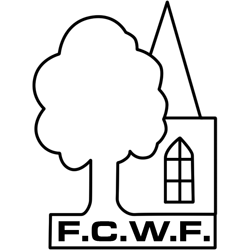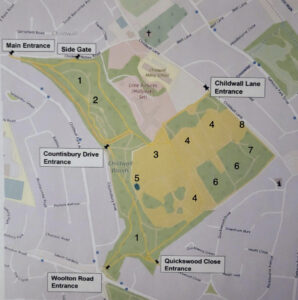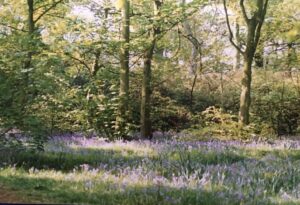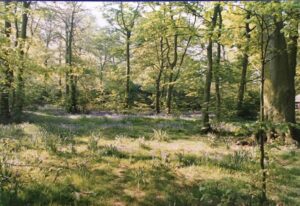What makes Childwall Woods and Fields special is the variety of habitats it contains.
This variety is the result of its history. It may look wild and ‘natural’ but the hand of man is everywhere; the whole nature reserve is man made.
There are eight important habitats found at Childwall Woods and Fields: mature deciduous woodland, glades, grassland, scrub, ponds and wetland, plantations, hedges and field boundaries, and planted landfill.
The map above shows the locations of these eight habitat types.
1. Mature deciduous woodland
The owners of Childwall Hall first started planting trees in the 1700s on what was once Childwall Heath. This sat on top of the sandstone hill you see as you approach Liverpool from the east.
They began planting what is now Black Woods on Woolton Road followed by the beechwood area of Childwall Woods, and used these areas to provide game cover for hunting.
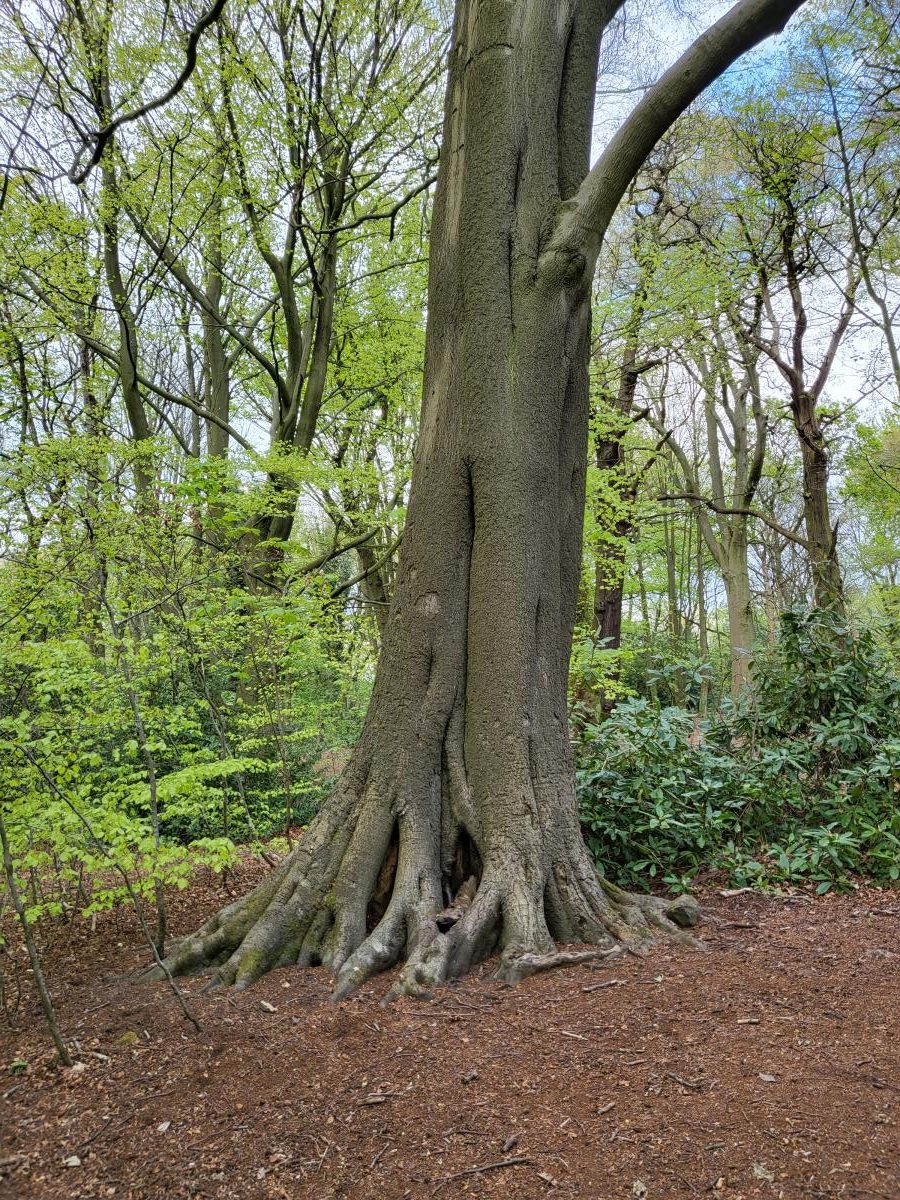 It is this planting which gives us today’s mature deciduous woodland with the carpet of spring bluebells under the huge old veteran beech and sweet chestnut trees. The understorey is holly and new growth beech with rhododendron.
It is this planting which gives us today’s mature deciduous woodland with the carpet of spring bluebells under the huge old veteran beech and sweet chestnut trees. The understorey is holly and new growth beech with rhododendron.
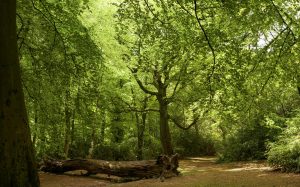 Later, the residents of Childwall Hall planted the ornamental woodland of the north woods with widely spaced beech, sweet chestnut, oak, horse chestnut, lime and sycamore.
Later, the residents of Childwall Hall planted the ornamental woodland of the north woods with widely spaced beech, sweet chestnut, oak, horse chestnut, lime and sycamore.
Then successive tenants added to the plantings of ornamental hollies, rare oaks and rhododendrons around the excavated carriageway and follies during the 1800s.
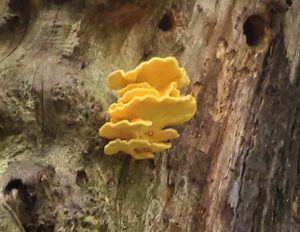 A particular feature of this site is that these woods have never been managed for timber for building, nor coppiced for charcoal, animal fodder or fuel. This makes them different from most British woodlands; they have always been for ‘leisure and pleasure’ rather than economics.
A particular feature of this site is that these woods have never been managed for timber for building, nor coppiced for charcoal, animal fodder or fuel. This makes them different from most British woodlands; they have always been for ‘leisure and pleasure’ rather than economics.
Trees have been allowed to grow old and die and this has lead to an accumulation of deadwood, both in fallen branches and in the veteran trees. This in turn feeds the astonishing profusion of fungi to be found here, such as this wood eating fungus, Chicken of the Woods.
2. Glades
Glades are areas of grassland within a wood and these are a feature of the northern ornamental woods. Glades are an essential part of the biodiversity of any woodland. Their openness means the light levels are higher and this supports a wider range of woodland plants. This makes them important for many insects – butterflies, bees and hoverflies for example – and consequently good feeding areas for birds.
3. Grassland
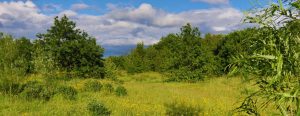 The Fields that drop away in three terraces to the east of Childwall Woods towards Huyton were once a single slope called Childwall Park which has been variously used in the past century as a golf course, pasture, wartime allotments and, in the sixties, a landfill site.
The Fields that drop away in three terraces to the east of Childwall Woods towards Huyton were once a single slope called Childwall Park which has been variously used in the past century as a golf course, pasture, wartime allotments and, in the sixties, a landfill site.
When the streets and houses of the suburb were built in the sixties, the landfill site was landscaped to make playing fields for the college that was built on the site of the demolished Childwall Hall. When the college closed, the playing fields were abandoned and nature took over.
 Childwall Fields is a habitat mosaic, meaning it includes a close mix of different habitat types; open grassland and marsh, bramble scrub, developing woodland and communities of tall herbs.
Childwall Fields is a habitat mosaic, meaning it includes a close mix of different habitat types; open grassland and marsh, bramble scrub, developing woodland and communities of tall herbs.
These areas combine to give the Fields their character and nature conservation value, providing a home to a wide range of associated plants and wildlife.
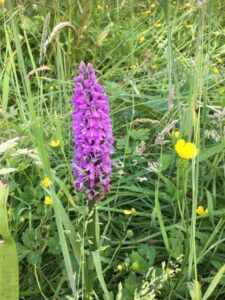 Marsh Orchids for instance, for which the Fields are noted, thrive in the open grassland, while scrubland birds such as Whitethroat, nest in the bramble and butterflies patrol the woodland edges.
Marsh Orchids for instance, for which the Fields are noted, thrive in the open grassland, while scrubland birds such as Whitethroat, nest in the bramble and butterflies patrol the woodland edges.
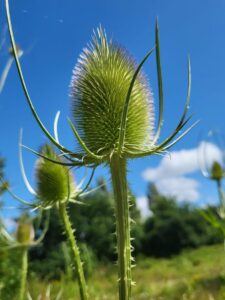 In the summer the fields are alive with colour: buttercups, rosebay willow herb, purple loosestrife, and stands of Michaelmas daisies and we are adding to this biodiversity by planting scabious, vetch, cowslip, Ragged Robin, knapweed, teasel, Greater Burnet and more.
In the summer the fields are alive with colour: buttercups, rosebay willow herb, purple loosestrife, and stands of Michaelmas daisies and we are adding to this biodiversity by planting scabious, vetch, cowslip, Ragged Robin, knapweed, teasel, Greater Burnet and more.
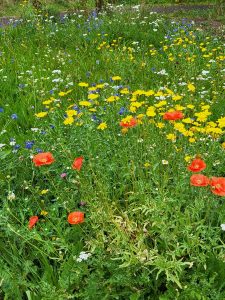
The management challenge we face is maintaining the meadow-like nature of the grassland so that wildflowers and orchids can thrive – along with the insects and butterflies they support – in the face of invasion by trees and scrub. This means that the fields must be mowed.
4. Scrub
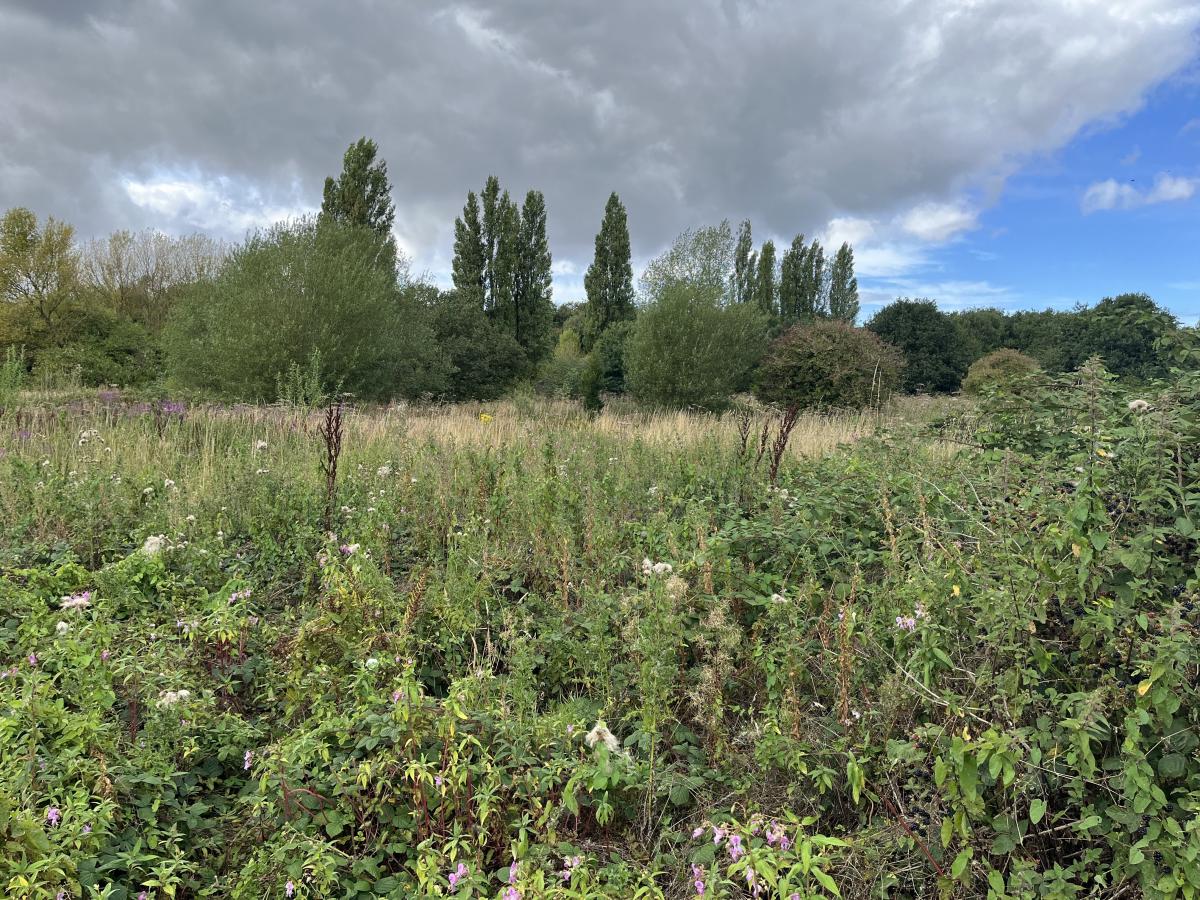 Scrub is an extremely valuable habitat and one on which many species depend for their survival. However, if left unmanaged, it can rapidly take over meadows and grassland.
Scrub is an extremely valuable habitat and one on which many species depend for their survival. However, if left unmanaged, it can rapidly take over meadows and grassland.
Scrub is often described as a ‘successional habitat’, meaning that it is temporary and in transition between grassland and woodland. At Childwall it is found on the Fields and generally consists of scattered hawthorn, elder or willow bushes, patches of nettles and bramble, and dense thickets next to woodland.
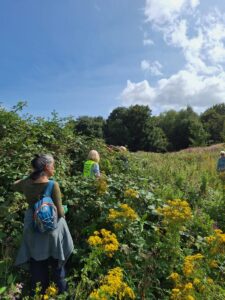
It is an important habitat for song birds such as our resident dunnock and goldfinch, and our migratory spring visitors such as blackcap, whitethroat, linnet and chiffchaff.
Our human visitors also like scrub – especially at blackberry picking time!
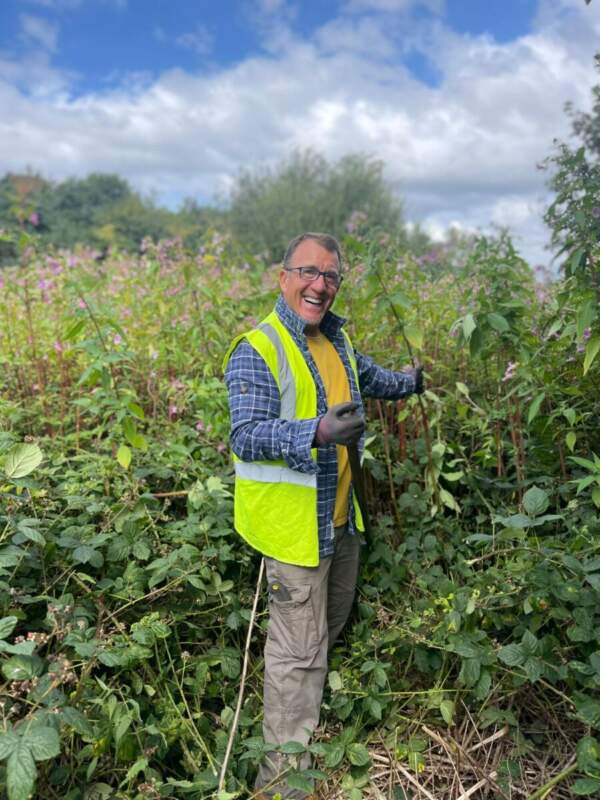 It is the areas of scrub that pose the greatest management challenge for the Friends. Keeping the paths open with the encroachment of nettles and brambles requires constant effort.
It is the areas of scrub that pose the greatest management challenge for the Friends. Keeping the paths open with the encroachment of nettles and brambles requires constant effort.
And it is here that we are trying to deal with invasive Japanese Knotweed and Himalayan Balsam. A five year programme against Japanese Knotweed shows some signs of success. The Battle with Balsam is just beginning.
But that is the nature of scrub. It is a highly dynamic habitat in constant transition.
5. Ponds and wetlands
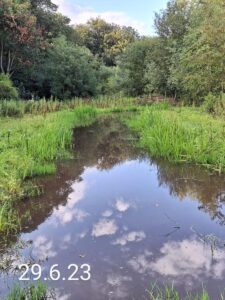 The area of the top field beside Childwall woods is poorly drained and marshy because of the clay that was put down to cap the old landfill site. The dense stands of reed mace or bullrushes which are visible on the top field confirm that this area is wet all year round.
The area of the top field beside Childwall woods is poorly drained and marshy because of the clay that was put down to cap the old landfill site. The dense stands of reed mace or bullrushes which are visible on the top field confirm that this area is wet all year round.
This now forms a distinctive wet grassland habitat and it is here that the ponds and wetland habitats have been created as part of the Habitat and Access Improvement Project.
This is the Long Pond just 4 months after it was dug by contractors and then planted by the Friends group.
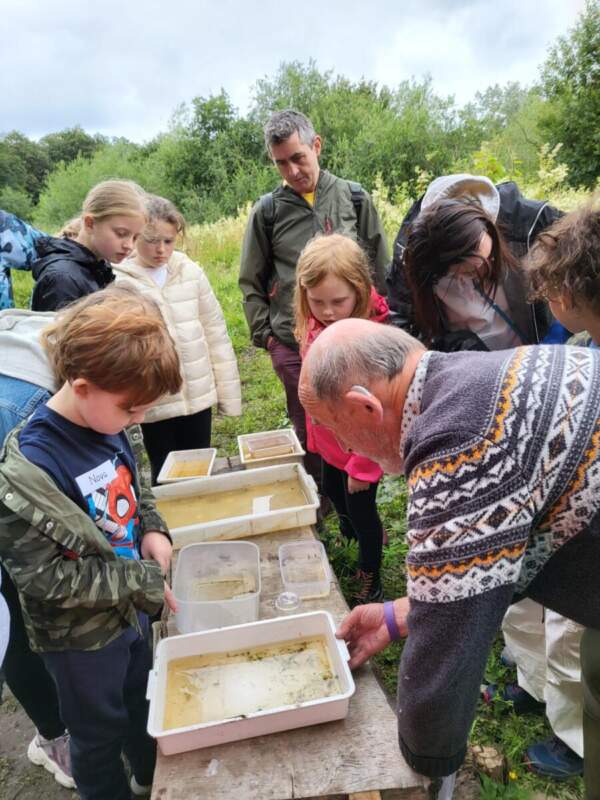 ‘The Dipping Pond’ is ideal for pond dipping, being shallow enough to attract many different creatures who enjoy pond edges.
‘The Dipping Pond’ is ideal for pond dipping, being shallow enough to attract many different creatures who enjoy pond edges.
A dipping platform has been built for that purpose and to create a platform for wheelchair users and children to enjoy the activity safely (under supervision).
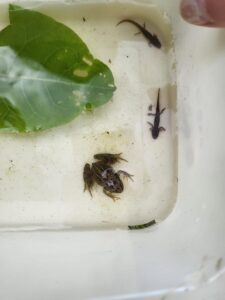 Only created in February ’22, the Dipping Pond has already astounded everyone with the wildlife that have made it their home.
Only created in February ’22, the Dipping Pond has already astounded everyone with the wildlife that have made it their home.
Three species of dragonflies have been recorded as well as numerous invertebrates, newts and frogs.
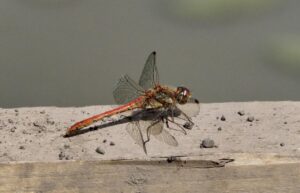 The ponds provide food for the birds and bats and have created a new distinct environment with the planting of specialised wetland plants.
The ponds provide food for the birds and bats and have created a new distinct environment with the planting of specialised wetland plants.
It is known that if you wish to increase the attractiveness of your garden for wildlife, the single best thing you can do is to add a pond. This is why we have added ponds to the nature reserve’s habitats. We are astounded and inspired by their success.
And, as we have found at pond dipping events, children are fascinated too!
6. New plantations & dense copses
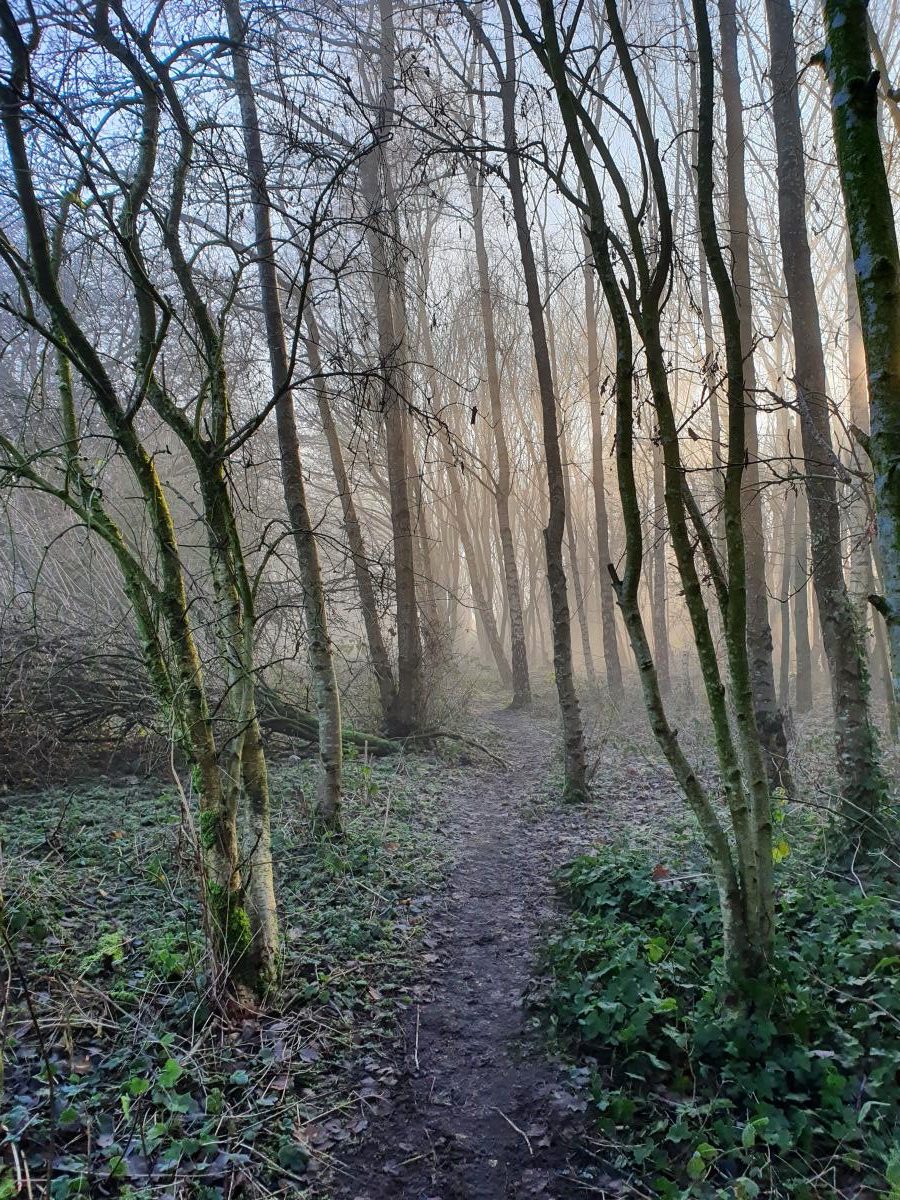 Each of the three fields contains dense plantations of trees mainly at the southern (Quickswood) end which were planted in the nineties. All of the plantations have been neglected and are in need of thinning, but this gives them their own distinctive character.
Each of the three fields contains dense plantations of trees mainly at the southern (Quickswood) end which were planted in the nineties. All of the plantations have been neglected and are in need of thinning, but this gives them their own distinctive character.
On the top field are stands of oak, pine, larch, birch, white willow, rowan, cherry, white poplar and whitebeam.
The experimental research plantings mainly of birch, ash, oak, cherry, alder, larch, willow and pine are found on the middle and lower fields. These tend to be the quietest and least visited areas of the reserve, partly because the access paths pass through scrub and tend to be overgrown.
The Friends group has recently planted a small orchard of twenty or so fruit trees in the open area in the centre of the middle field.
A more detailed description of the plantations and the unusual variety of trees they contain can be found here.
7. Planted landfill site
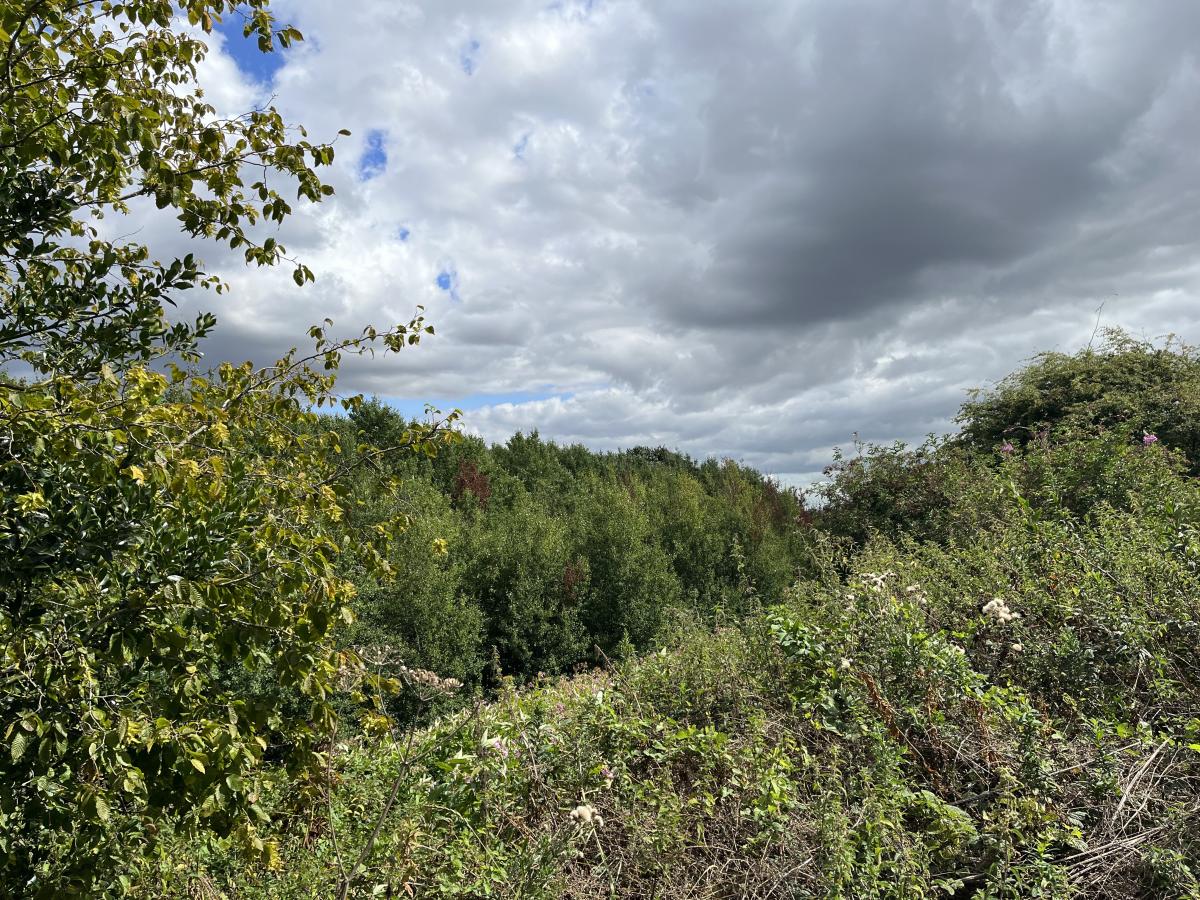 The sharp boundaries and steep slopes between the lower fields are reminders that this is a man made landscape.
The sharp boundaries and steep slopes between the lower fields are reminders that this is a man made landscape.
Thousands of tonnes of landfill dumped on the original field slope have been levelled to create the three terraces we now see.
This is the slope from the lower field down to Childwall Lane above the aspen plantation.
Other reminders of the landfill are the strange objects that can be found sticking out of the ground among the trees or on the slopes, especially when a tree has fallen in a storm. And strange oil slicks can sometimes be seen on puddles after rain – all from the rubbish of previous generations!
8. Hedges and Field boundaries
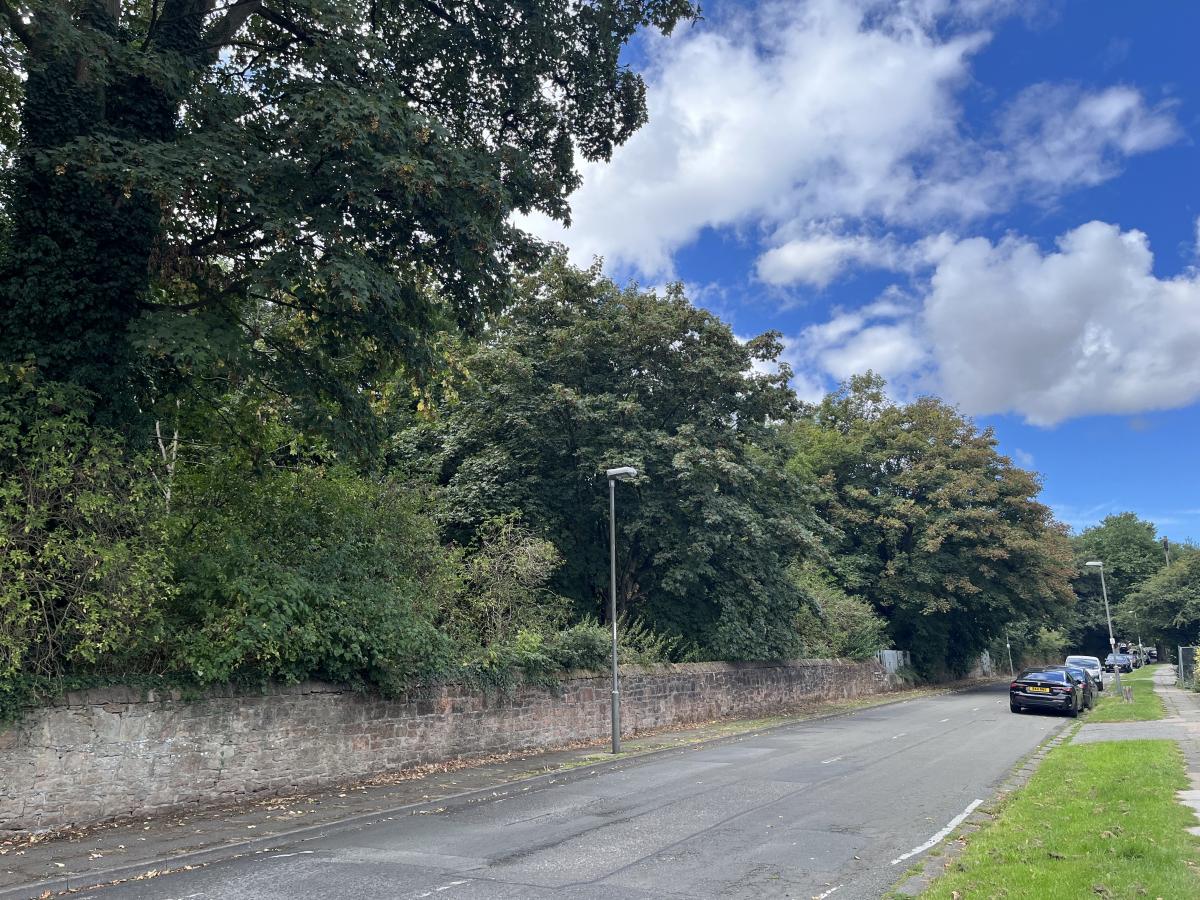 There is not a lot of hedgerow at Childwall Woods and Fields but there is some. This can mainly be seen along Childwall Lane.
There is not a lot of hedgerow at Childwall Woods and Fields but there is some. This can mainly be seen along Childwall Lane.
Here there is an old field boundary with mature sycamore, ash, oak and lime trees and the remains of a hedgerow.
Some local residents have said that they remember when the field was pasture and they would stroke the horses over the boundary wall. The hedgerow is mainly hawthorn with dog roses. Last year 300 new saplings were planted along the hedge to thicken it and make it more valuable for wildlife.
Andrew Scott, Jan 2024

